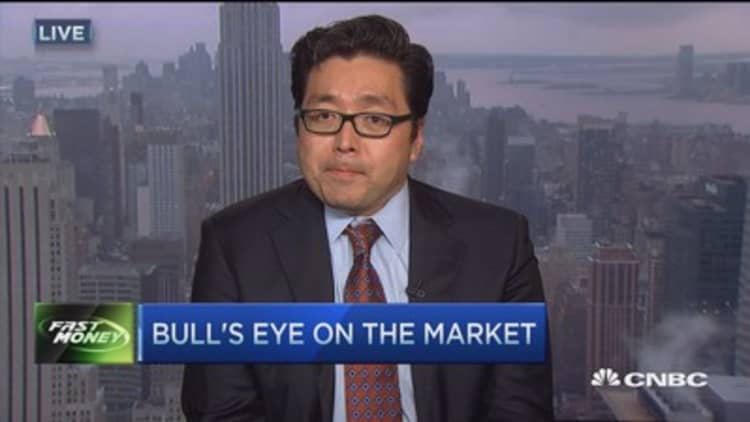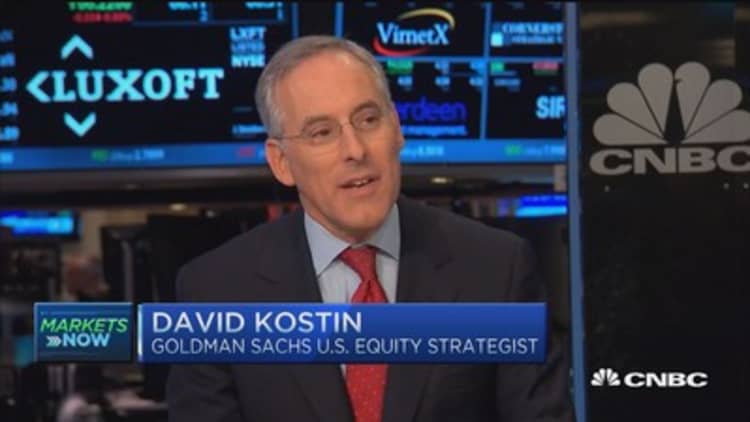With less than three months left in 2015, investors may find it harder than ever to figure out whether U.S. stocks will end the year in the red or eke out a gain.
Bulls and bears alike have come out in force following two months of heightened volatility that saw U.S. markets bottom on Aug. 25 and retest lows one week ago.
Add to that the Fed's decision to hold rates steady at its September policy meeting and a disappointing jobs report last week, and revisions to year-end targets are now coming in fast and furious.
Following a three-day rally, the S&P 500 remains down more than 3 percent for the year, and the Dow Jones industrial average is off about 5.5 percent. The Nasdaq is 0.6 higher since January.
The bears come out
Read More Strategists clamor to cut S&P 500 forecasts
On Tuesday, strategist Jim Paulsen issued a note saying the recent rally may not hold. He said his best guess is the correction is not over.
"In our view, a quick recovery back near all-time highs would leave the stock market with many of the same vulnerabilities that started the correction," wrote. Paulsen, Wells Capital Management's chief investment strategist. "Consequently, we would not be surprised if the stock market tests its correction low yet again and perhaps even fails before reaching a final bottom."

Prior to the jobs report, economist David Blitzer said he believes stocks would likely end the year negative.
"You're going to need some really big catalyst to get going, and I think there's still too much anxiety," the chairman of the S&P Dow Jones index committee told CNBC's "Squawk Box."
Alan Newman, editor of the newsletter "Crosscurrents," said investors are in the midst of a bear market and stocks have not even begun to bottom. He told CNBC the Dow could fall another 2,600 points, or 16 percent, from its pre-jobs report level just above 16,000.
Newman, who correctly predicted the recent market decline, said margin debt levels show traders are borrowing more than at any time in the last 85 years. High margin debt accompanied the financial crisis collapse in 2007 and the tech bubble downturn of 2000, he noted.
The bulls dig in

But some market watchers believe sentiment has simply turned too negative.
"It feels like someone called fire in a crowded theater," consummate bull and Fundstrat Global Advisors founder Tom Lee recently told CNBC's "Fast Money."
Lee said the S&P 500 can still hit his target of 2,325, predicting it would outperform global indexes in a seasonally strong period. He also sees the dollar providing a tailwind as its rise moderates, and said weakness in China won't necessarily spill over into U.S. markets, citing the example of Japan's impact — or lack thereof — in 1989.
Concerns over China's slowing growth — and the government's ability to intervene — August's sell-off.
Brian Belski at BMO Capital Markets told CNBC's "Power Lunch" on Monday agreed that domestic growth will offset overseas weakness.
He is sticking to his call that the S&P will end the year at 2,250. Belski said a stock market rally could be in the cards as third-quarter earnings surprise to the upside.
Read MoreIs there an earnings recession looming?
Analysts expect third-quarter earnings to fall 5 percent from last year, according to FactSet.
Then there's the camp that says the market still has room to run — just not as much room as previously expected.

Markets rallied just days after Goldman Sachs knocked down its S&P target from 2,100 to 2,000, but chief U.S. equity strategist David Kostin is not changing his tune.
With markets just 20 points off the new target, he told "Squawk on the Street" on Monday he expects markets to trade sideways through year-end.
RBC Capital chief U.S. market strategist Jonathan Golub and his team offered a mea culpa last week on his uber-bullish call for the S&P to end the year at 2,325, but they're still relatively optimistic. He now expects the index to rise to 2,100.
Read More If the market rallies, these 8 stocks should surge
The market ructions have left some participants wary of making a firm call.
Nuveen Asset Management's Bob Doll told "Squawk Box" on Monday that selling pressure in U.S. markets appears to be exhausting, and the worst may be behind us.
But when asked if he was calling a bottom, he said markets may yet test August's lows one more time.


